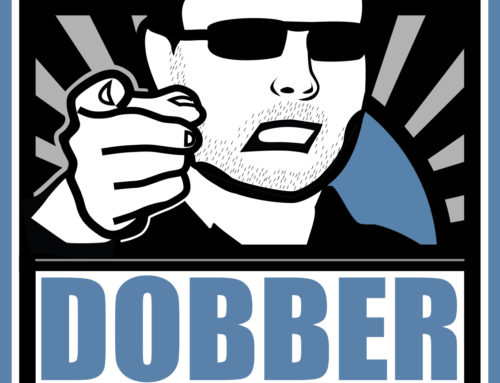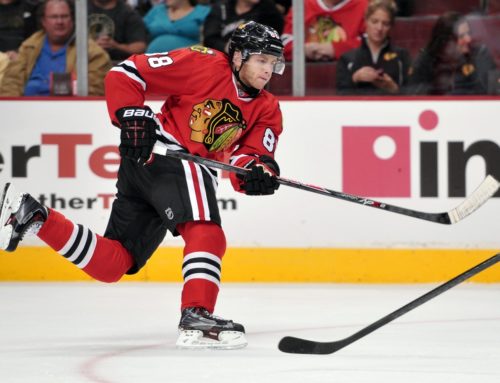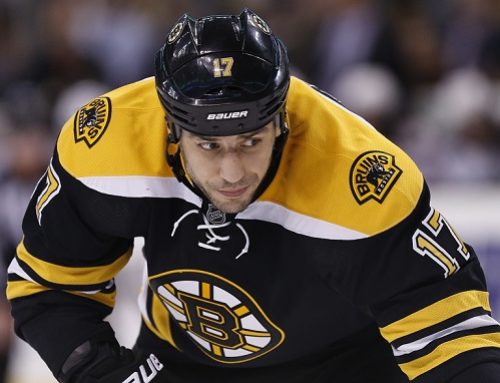
I will never forget when Michael Leighton was pulled in Game 1 of the Stanley Cup Final. Watching him skate to the bench and walk down the runway was a moment of pure emotional openness. His demeanor and the agony in his eyes screamed helplessness. Even though his tense, hesitant play led to some weak goals, Leighton was yanked on a shot he had no chance of stopping. That single fleeting moment, well, it tells a very important story.
It's no secret that a coach often acts on impulse. Some hasty decisions will work out more often than others, like line-shifting on the fly, making a late scratch and much more. But since goaltending is the main X-factor between winning and losing, it's safe to say that goalie decisions are the most important, or at least the most influential, of them all. That's why hasty goalie decisions, especially ones that are made in the playoffs, rarely work out the way you want.
Inside a frothing mad United Center, Game 1 was simply nuts. Nothing was going right for either goalie, coaches lacked control of the game's flow and both teams were shaking off the nerves and rust from a five-day layoff. In such a chaotic situation, even the veteran bench bosses will be prone to a blunder. Like being lost in a forest in the dead of night, Laviolette seemed to lack a solid point of reference when making his goalie change. Gauging how well a goalie is playing in such a schizophrenic game is not easy, for the true nature of the goals against him is often hidden.
But even Merlin, who was considered the greatest medieval coach of all time for King Arthur and his legions, was known to be quite wary of omens. He might be remembered as an old man in a pointy hat waving a wand and magically winning wars, but history teaches that he was an extremely skilled fighter that turned into a keen prophet, a counselor to many kings and a dedicated student in the fields of human psychology and earthly science.
In fact, most of history's prophets, kings and leaders watched for warnings of imminent evil before heading into battle. Perhaps drawing from even earlier ancestors, they all believed that greater forces in the world would signal special messages through symbols visible to anyone who could read their warnings before catastrophe struck.
Unfortunately for Laviolette, pulling Leighton may have caused his own catastrophe. I thoroughly explained this in the forums, but when a goalie struggles early in a big game, a coach must look for signs and symbols that they are not improving or settling down. But sometimes, if the goalie stops a few routine shots, they will settle down and play much better. So it was not the decision to pull Leighton that was so unfathomable, it was the timing. It came after a goal he had no chance of stopping and it came after he made four very nice, solid, composed glove saves in a row.
But one thing led to another, as the Game 1 loss led to a media hullabaloo about the potential starter for Game 2. That led to Laviolette to say he wouldn't announce a starter at all. Then just a few hours later, the Flyers made a PR statement saying that Leighton was in fact starting Game 2. It was almost as if Laviolette was trying to make things harder on his goalies, by putting them through this circus act of who starts and who sits. So what's the real lesson?
Making good goalie decisions, whether you are coaching in the Stanley Cup Finals or preparing for a fantasy draft, takes more time and clairvoyance than usual. A strong understanding of how a goalie reacts emotionally and mentally is an absolute must. Think of what made Merlin such an amazing seer and strategist for King Arthur. It was the fact that he knew and understood Arthur, as a person, both inside and out.
Remember, there's a reason why so many fantasy analysts advise you to trust your instincts. Just like a picture can tell a thousand words, so too can symbols speak louder than statistics. Embrace the invisible, for it is all around you. If you do, signs and symbols will appear and they will act as personal guides in making the right goalie decisions. If Laviolette had taken a time out to weigh his goalie change decision a little more, Leighton would have stayed in, and who knows how the series would have unfolded.
Before I leave for the week, I wanted to give you a glimpse of what I've done for Dobber's Fantasy Prospects Report, which I am very proud and excited to be a part of. Below is some insight on the top goalie available in the upcoming NHL Entry Draft, Jack Campbell. As you can see, the symbols and signs in nature that surrounded him reveal an extremely bright future! Enjoy this and be sure to pick up Dobber's guide later this week!
Jack Campbell – USA Hockey Junior Development Program
The hype surrounding Port Huron, MI native Jack Campbell started as a small trickle almost one full year before the World Junior Championships took place. Working with USA Hockey head goalie coach Joe Exeter as a 16 and 17-year-old in the USJDP, Campbell went 14-6-1 in the 2008-09 campaign with a 2.52 goals-against average and .906 save percentage in the North American Hockey League (NAHL).
Despite his age and limited games played, Campbell impressed scouts and coaches everywhere he went. Videos started to pop up on YouTube from his time spent with some other elite goalie coaches over the summer, including one Stan Matwijiw, who is well known for helping Chris Osgood improve and refine his game during the NHL Lockout.
Once the 2010 WJC took place and Campbell displayed his skills and mental toughness on the grandest of stages, his value skyrocketed. It was such an amazing and shocking feat to walk away with the Gold Medal against Canada that he instantly became an enigma. Seemingly out of nowhere, Campbell was now a lock as a first-round draft choice. The buzz grew even more when he decided to sign on with the Windsor Spitfires for next season, as opposed to taking the traditional NCAA route. That pushed his value even higher, for playing 60-65 games in a season is much more beneficial than playing 25-30. Now it's at the point where some feel Campbell will be chosen 4th or 5th overall.
But before you pin Campbell as the next Ryan Miller, it is important to know what truly makes his game so strong and exciting. And instead of blanketing you with all of the cliché terms that a normal scouting report on Campbell would have, I'll compare and describe his skills set (and his future fantasy value) to that of a house.
Everyone knows that a sturdy house depends solely on the strength of its foundation. The same is true for a goalie prospect. With a strong skill base, a goalie can add more and more advanced elements to their game as time goes on. Today's refined butterfly style is a sequential series of movements that are executed in a smooth progression. So the stronger the foundation, the more a goalie can improve their efficiency by increasing the speed, power and balance in which they execute these series of movements.
Once a goalie has the confidence to consistently execute properly at a high level, they start executing faster. And once a goalie executes faster, they begin to think the game faster. And once they think the game faster, things like rebound control, energy conservation and puck/game management improves yet again. The process repeats itself over and over until the goalie finally reaches their plateau. The rest of their career is spent sustaining their highest level of play possible, which is why practice with the team's goalie coach is now such an important asset in the NHL.
As you can see, Campbell has all of the tools, both mentally and technically, to be one of the world's best. The hype surrounding him is rooted in his performance in the World Juniors, but the legitimacy is rooted in his skills. Because he has such a strong foundation at such a young age, there really is no limit to what he can achieve. Goalie coaches will continue to love working with him because he not only executes at a high level, but he refines and advances them as well. As a result, Campbell's combination of mental prowess and elite technique makes him a viable keeper-league fantasy option and a viable goalie worth plucking in the first 15 picks of the 2010 NHL Entry Draft.





 FLA
FLA EDM
EDM VGK
VGK MIN
MIN DAL
DAL WSH
WSH PHI
PHI NSH
NSH CGY
CGY VAN
VAN CHI
CHI
